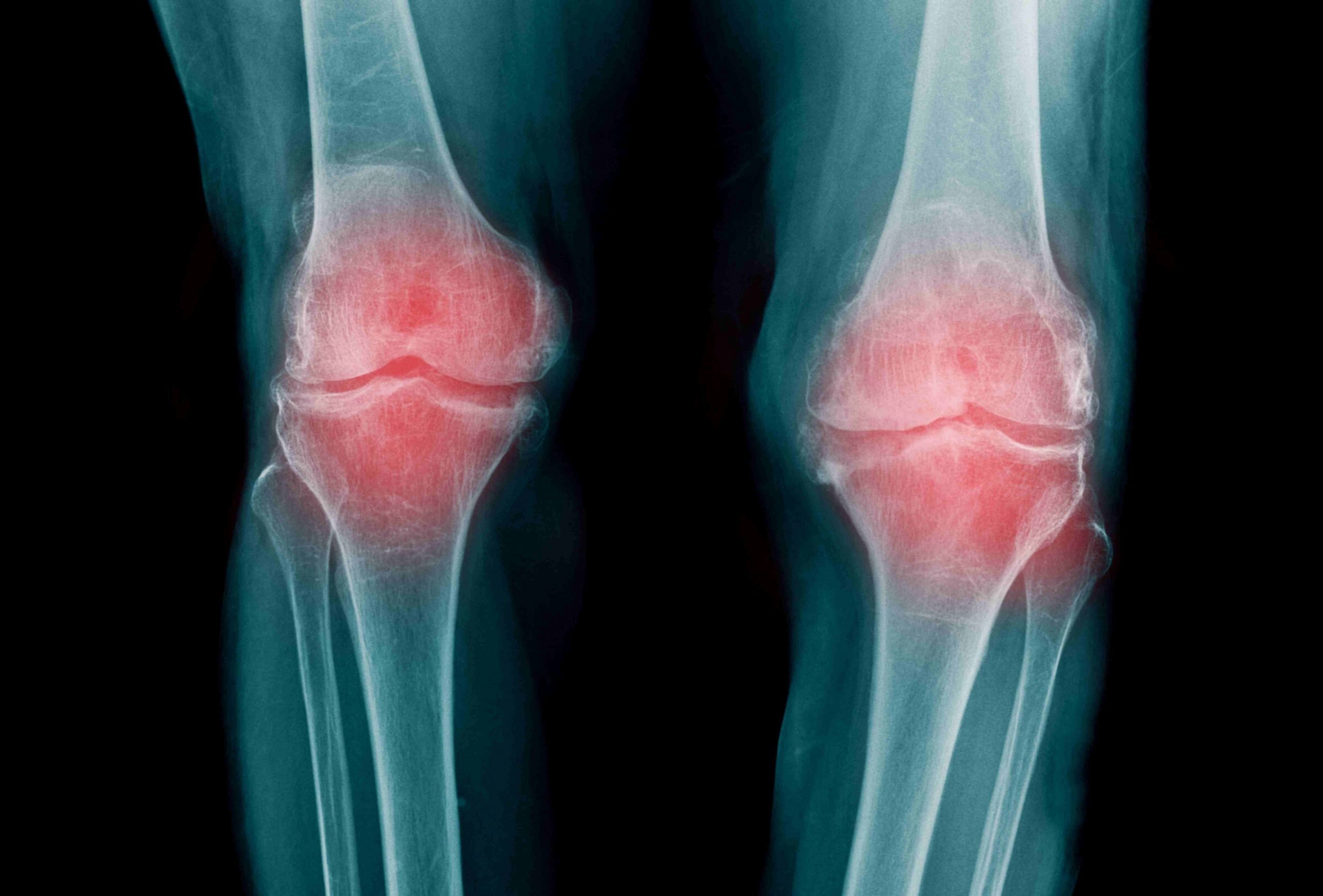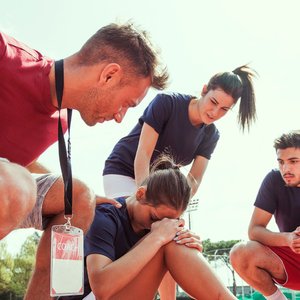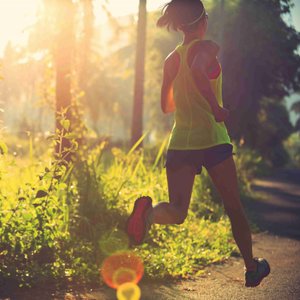Healthy Life
Common beliefs about osteoarthritis
by Uperform

This blog post is based on the article by O'Brien and his team entitled "Time to bust common osteoarthritis myths" (1)
- Osteoarthritis is a pathology of the elderly
It is true that osteoarthritis is more common in the elderly. However, we cannot reduce it to an age-related pathology because it is indeed multifactorial (2). Moreover, young people can also be affected (3). Many factors have been associated with osteoarthritis, including gender, obesity, genes, joint structure, injury history, occupation (2)…
- Osteoarthritis is just wear and tear on the join
Although it is often defined by structural changes in the cartilage, there are also changes in the bones, synovial tissue and muscles of the joint. It would be more accurate to consider osteoarthritis as a syndrome (i.e. a set of signs and symptoms). As mentioned earlier, it is a multifactorial pathology and biomechanical, inflammatory, metabolic, genetic, neurological factors (which explain the non-mechanical pain that some patients feel).
A moderate level of physical activity and exercise is also protective against osteoarthritis, which contrasts with the vision of the worn joint (4). Additionally, numerous studies show that improving muscle function reduces pain and improves function in osteoarthritis (4,5).
- The worse the imagery, the worse the articulation
Medical imaging (such as X-ray or MRI) is often used to diagnose osteoarthritis. However, based only on a diagnosis made by X-ray, only half of people have symptoms (6,7). According to the guidelines, the diagnosis of osteoarthritis can be made clinically and imaging is not systematically necessary – sometimes it could even be counterproductive by reinforcing a mechanical view of the pathology (8). However, imaging is useful to exclude other pathologies or when surgery is planned (2).
- Non-surgical treatment is not effective and just delays the placement of a prosthesis
Education, dietary and lifestyle modifications, and physical activity are mainstays of treatment for people with osteoarthritis (2,5). Treatment options should be implemented gradually, first focusing on conservative treatment (education, exercises and weight loss if necessary) then on to pharmacological and finally surgical interventions if necessary (8).
Numerous studies support that exercise positively influences pain, muscle function, weight, cardiovascular health, mood, and disease progression, regardless of structural changes and symptom severity (5, 9–11). Among the most important limitations to exercise effectiveness are exercise prescription and patient adherence. A non-optimal exercise prescription may result in either overloading the joint (leading to increased pain and swelling) or insufficient weight bearing to have positive adaptations.
Weight gain is a well-known risk factor for osteoarthritis and obesity is frequently associated with disease progression (12). Weight loss is strongly recommended for patients suffering from obesity and osteoarthritis, not only to reduce joint stress but also to counter the inflammatory process (12). A loss of ≥10% in weight can lead to a significant reduction in pain in patients who already present with the pathology (13).
- The prosthesis is inevitable
Although the prosthesis is a valid treatment option for some patients, it is not appropriate for all people with osteoarthritis. The evolution of the pathology is different and many patients will not reach the stage at which the prosthesis is necessary (14). In addition, it should be considered only after appropriate conservative treatment and meeting current recommendations (8).
To conclude, many maladaptive beliefs surround osteoarthritis. Quality information is necessary to ensure optimal treatment. If you have any further questions, please do not hesitate to speak with a knowledgeable healthcare professional.
Références
1. O’Brien D, Chapple C, Baldwin J, Larmer P. Time to bust common osteoarthritis myths. N Z J Physiother. 2019 Mar 31;47:18–24.
2. Rheumatology, 2-Volume Set – 7th Edition [Internet]. [cited 2020 Feb 20]. Available from: https://www.elsevier.com/books/rheumatology-2-volume-set/hochberg/978-0-7020-7306-9
3. Ackerman IN, Bucknill A, Page RS, Broughton NS, Roberts C, Cavka B, et al. The substantial personal burden experienced by younger people with hip or knee osteoarthritis. Osteoarthritis Cartilage. 2015 Aug;23(8):1276–84.
4. Skou ST, Pedersen BK, Abbott JH, Patterson B, Barton C. Physical Activity and Exercise Therapy Benefit More Than Just Symptoms and Impairments in People With Hip and Knee Osteoarthritis. J Orthop Sports Phys Ther. 2018 Jun;48(6):439–47.
5. Fransen M, McConnell S, Harmer AR, Van der Esch M, Simic M, Bennell KL. Exercise for osteoarthritis of the knee: a Cochrane systematic review. Br J Sports Med. 2015 Dec;49(24):1554–7.
6. Phan CM, Link TM, Blumenkrantz G, Dunn TC, Ries MD, Steinbach LS, et al. MR imaging findings in the follow-up of patients with different stages of knee osteoarthritis and the correlation with clinical symptoms. Eur Radiol. 2006 Mar;16(3):608–18.
7. Jordan JM, Helmick CG, Renner JB, Luta G, Dragomir AD, Woodard J, et al. Prevalence of knee symptoms and radiographic and symptomatic knee osteoarthritis in African Americans and Caucasians: the Johnston County Osteoarthritis Project. J Rheumatol. 2007 Jan;34(1):172–80.
8. Overview | Osteoarthritis: care and management | Guidance | NICE [Internet]. [cited 2020 Feb 20]. Available from: https://www.nice.org.uk/guidance/cg177
9. The role of muscle strengthening in exercise therapy for knee osteoarthritis: A systematic review and meta-regression analysis of randomized trials. – PubMed – NCBI [Internet]. [cited 2020 Feb 20]. Available from: https://www.ncbi.nlm.nih.gov/pubmed/28438380
10. OARSI recommendations for the management of hip and knee osteoarthritis, Part II: OARSI evidence-based, expert consensus guidelines. – PubMed – NCBI [Internet]. [cited 2020 Feb 20]. Available from: https://www.ncbi.nlm.nih.gov/pubmed/18279766
11. Kujala UM. Evidence on the effects of exercise therapy in the treatment of chronic disease. Br J Sports Med. 2009 Aug;43(8):550–5.
12. Patient characteristics that predict progression of knee osteoarthritis: a systematic review of prognostic studies. – PubMed – NCBI [Internet]. [cited 2020 Feb 20]. Available from: https://www.ncbi.nlm.nih.gov/pubmed/?term=Chapple%2C+Nicholson%2C+Baxter%2C+%26+Abbott%2C+2011
13. Is There a Dose-Response Relationship Between Weight Loss and Symptom Improvement in Persons With Knee Osteoarthritis? – PubMed – NCBI [Internet]. [cited 2020 Feb 20]. Available from: https://www.ncbi.nlm.nih.gov/pubmed/26784732
14. Gustafsson BÅ, Ekman S-L, Ponzer S, Heikkilä K. The hip and knee replacement operation: an extensive life event. Scand J Caring Sci. 2010 Dec;24(4):663–70.

